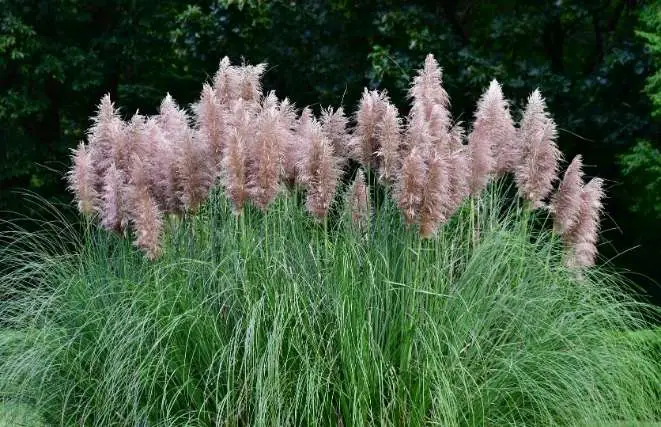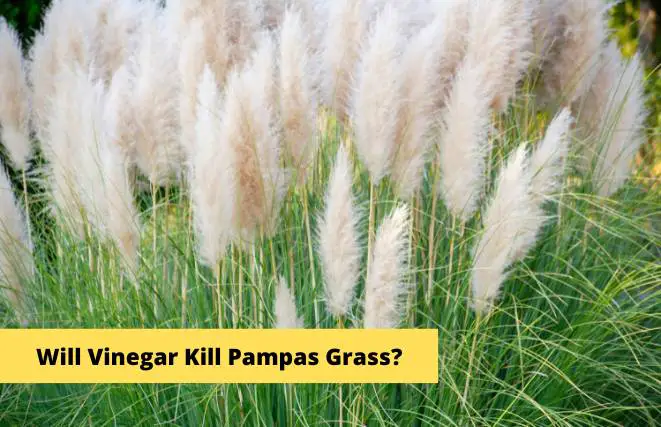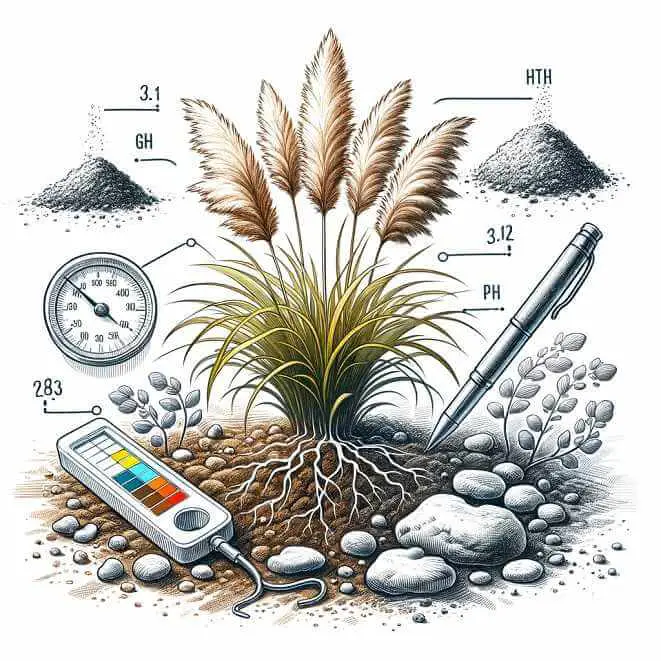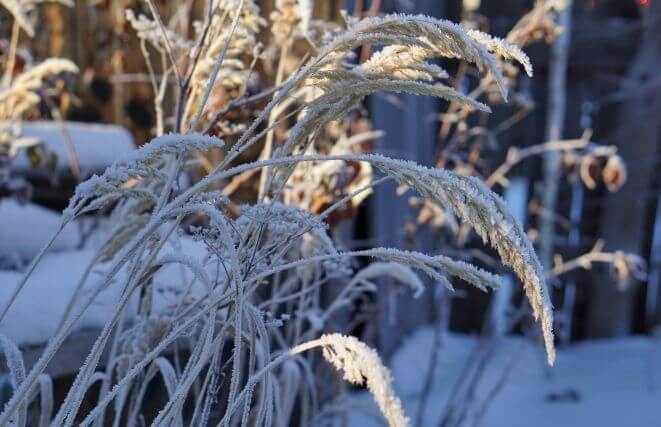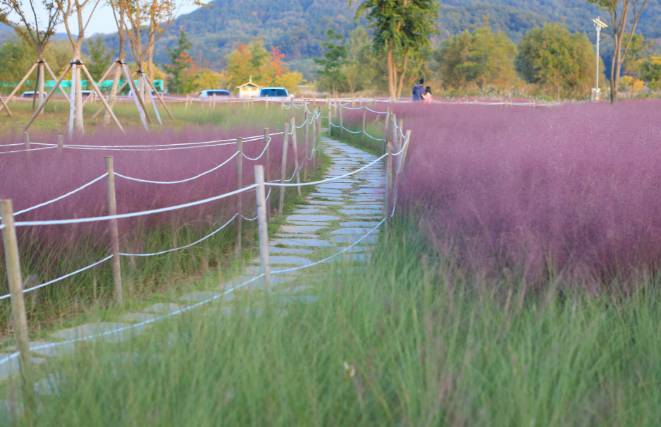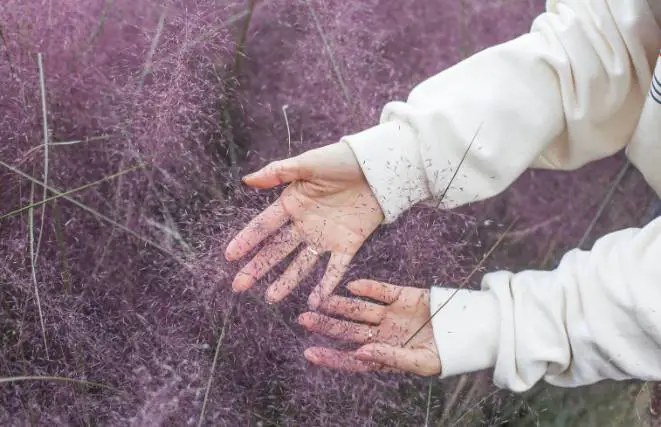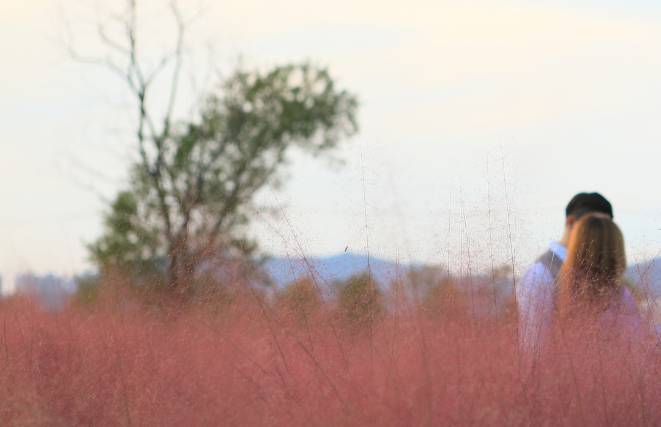Purple pampas grass, also known as Cortaderia jubata, is a stunning ornamental grass that can grow up to 12 feet tall. It features beautiful purple plumes that can last from late summer until early winter, adding an attractive pop of color to any garden or landscape. In this blog post, we will discuss the different varieties of purple pampas grass, how to grow and care for it, and some creative ways to incorporate it into your outdoor space.
The Key Facts About Purple Pampas Grass
The pampas grass species are originally native to South America. Today, the purple variety is now also native to the northern Andes. It has also spread to many parts of the world, and people cultivate it in other parts of North America, Europe, and Africa. One of the main ways this happens is when travelers carry seeds for planting from one region to another.
The most widespread variety in this grass family is the pampas grass Cortaderia selloana. A lesser-known and less common variety is Cortaderia jubata, which is referred to as the purple grass or Andean pampas grass. It exists naturally and is not a product of artificial coloring. The panicles or plumes in this plant can be either purple or pink.
As far as the plant size and height, purple pampas grass can grow to be very large. This grass can reach a height of up to 15 feet to 20 feet. The spread of this plant can extend very wide as well making it a standout feature in any garden landscape.
| Common Name | Purple Pampas Grass |
| Scientific Name | Cortaderia jubata, Andean Pampas Grass |
| Height & Spread | 6-10 ft tall and 6-8 ft wide |
| Sun Exposure | Full sun to partial shade |
| USDA Growing Zones | Zones 8-10 |
| Water | Low to moderate watering |
| Soil Type | Well-drained soil |
| Soil pH | 5.5-7.5 |
| Pests & Diseases | Susceptible to rust and fungal diseases |
| Bloom Time | Late summer to early fall |
| Flower Color | Purple-Cream |
| Native Area | South America |
When to Plant Purple Pampas Grass
Purple Pampas Grass (Cortaderia selloana ‘Rosea’) is typically planted in the spring or early summer, after the last frost date for your region. The exact timing for planting can vary depending on your climate and location, but here are some general guidelines:
Spring Planting: In most regions, spring is the ideal time to plant Purple Pampas Grass. Wait until the threat of frost has passed and the soil has warmed up. This allows the grass to establish its root system before the onset of winter.
Late Spring to Early Summer: Aim to plant Purple Pampas Grass in late April to early June, depending on your local climate. Planting during this period provides the grass with the best chance of thriving.
Remember that Purple Pampas Grass can grow quite large and may need sufficient space to accommodate its mature size. Additionally, it can be invasive in some regions, so check with local authorities to ensure it is suitable for planting in your area.
When to Prune Purple Pampas Grass
Pruning Purple Pampas Grass (Cortaderia selloana ‘Rosea’) is essential for maintaining its appearance and health. The best time to prune this ornamental grass is in late winter to early spring, typically between late February and early March, before new growth starts. Here are the key points to consider when pruning Purple Pampas Grass:
Timing: Prune Purple Pampas Grass in late winter or early spring, before the new growing season begins. Avoid pruning in the fall or during the growing season to prevent damage to the developing plumes.
Tools: Use sharp pruning shears, loppers, or a handheld pruning saw to cut back the grass effectively. Ensure that your tools are clean and sharp to make clean cuts.
If your Purple Pampas Grass has grown exceptionally large and is crowding the space or becoming unruly, you can consider dividing it during the pruning process. Dig up the entire plant, separate the clumps, and replant the divided sections.
Pruning Purple Pampas Grass in late winter or early spring helps rejuvenate the plant, remove dead growth, and promote vigorous new growth for the upcoming season. Proper pruning enhances its appearance and ensures a healthy and attractive display of plumes in the garden or landscape.
How to Prune Purple Pampas Grass
Pruning Purple Pampas Grass (Cortaderia selloana ‘Rosea’) is an important part of its maintenance to keep it healthy and looking its best. Here’s a step-by-step guide on how to prune Purple Pampas Grass:
Tools Needed:
- Pruning shears or loppers
- Handheld pruning saw (for larger plants)
- Gardening gloves
- Safety goggles (optional, for eye protection)
- Long-sleeved clothing (to protect against sharp grass blades)
Steps:
- Safety First: Before you start, wear protective clothing, including gloves and long sleeves. If you’re working with a large specimen, safety goggles can protect your eyes from any debris.
- Assess the Plant: Take a close look at the Purple Pampas Grass to identify the areas that need pruning. Look for dead or brown foliage from the previous year and old flower plumes that may still be attached.
- Cut Back Foliage: Using pruning shears or loppers, begin by cutting back the grass foliage to the desired height. You can cut it down to a few inches above the ground. Some gardeners prefer to leave the grass slightly taller (6 to 12 inches above the soil) for added winter interest or to protect the crown.
- Remove Dead Material: As you prune, remove any dead or brown leaves, and trim away old flower plumes. This helps improve the overall appearance of the plant and encourages new growth.
- Dispose of Debris: Collect all the pruned material and dispose of it properly. Because Purple Pampas Grass debris can be bulky and slow to decompose, it’s best not to add it to your compost pile. Check local disposal regulations for green waste or yard debris collection.
By following these steps, you can effectively prune Purple Pampas Grass to promote healthy new growth and maintain its attractive appearance. Proper pruning ensures that your Purple Pampas Grass will produce its iconic plumes and thrive in your garden or landscape.
What Is Purple Pampas Grass Used for?
The main purpose of all close relatives of the pampas grass Cortaderia selloana family is an ornamental plant. The plant can be grown in a garden or other space to beautify it. The colorful plumes are very attractive and can be the star of any landscape. These plants are popular near pool or pond areas. You can also grow purple pampas grass to use as a privacy screen. Since this is one of the tallest pampas grass varieties, it is useful for this.
In some countries, people cultivate pampas grass to use as animal forage and to provide erosion protection for the soil.
You may have seen purple pampas grass in its dried version. It is harvested and dried to use as a decorative, and you can add it to an indoor floral arrangement.
Why Is Pampas Grass Bad?
There is a lot you can do with a beautiful plant like purple pampas grass, but it’s not all good news with this grass species. Pampas grass Cortaderia selloana and other varieties in this family are illegal to grow and sell in many places around the world. In the US, they are classified as weeds. Anyone planning to start cultivating this grass must pay attention to a few things.
The bad side of all pampas grass species is that they can be highly invasive. It grows and spreads very quickly and can populate an entire area. When this happens, the pampas grass can choke out other plants in the garden or space. Doing this decreases the plant biodiversity in that space. If any animals were living there, it can affect their habitat. The leaves are also sharp and harmful to animals. Find more information about Invasive species at CABI.org.
Another danger with purple pampas grass, particularly on the West Coast where it is widespread, is the increased risk of wildfires. Pampas grass produces plenty of leaves, which, when dry, can provide ready foliage to propagate these dangerous fires.
The reason why these invasive grasses can completely take over an area is that it spreads very easily wherever it is grown. If no preventative measures are put in place, this invasive grass can be a real threat. For places where people are permitted to cultivate the grass, there have to be some control measures in place to prevent these invasive grasses from dominating a landscape. Sterile varieties can be grown, and these are usually smaller in size than the invasive varieties that produce many seeds. You can also use herbicide products.
Cultivating Purple Pampas Grass (Cortaderia jubata)
In this section, you can find out more about how purple grass grows as well as other relevant cultivation information.
Propagation
Cortaderia jubata, Andean pampas grass is unique in its method of propagation compared to other Cortaderia selloana varieties. The latter produces millions of seeds in the course of their lifetimes and are spread by wind dispersion. The female plants are more prevalent than the male plants for these.
With purple pampas grass, all plants are female. Fertilization of the plants and seed production takes place without fertilization. Each purple pampas grass plant goes on to even produce millions of seeds that can be spread by the wind, by water, by animal transport, or by soil.
If you choose to propagate this new plant by planting the seeds, you have to wait longer to see the full large plants in your landscape. The other method is to cut some clusters from existing plants. You may need to search for these from a grower near you.
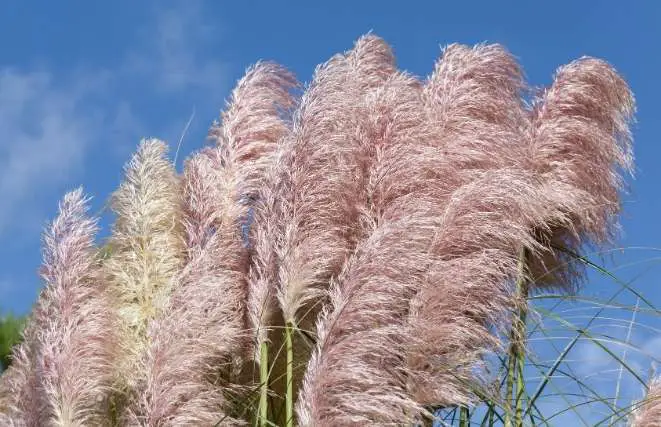
Growing Zone and Season
Purple pampas grass grows best in California. It likes the cool and moist conditions along the Pacific coast there. Although it is an invasive weed, you can find it in many national parks in California. The right purple pampas grass Zone 7 up to Zone 11.
Optimum Growing Conditions
As far as the ideal growing soils, there is a bit of leeway. You can grow purple pampas grass in rocky, clay, or sandy soils, but these must be moist and with good drainage. As far as soil pH, all soil types are appropriate.
This plant requires full sun exposure, so it does not grow as well or as large when you are planting it in cold and moderate regions.
You can expect to start seeing the beautiful purple blooms in the summer-time. The flower color ranges from different shades of pink to purple.
One of the best things about cultivating this large plant is that it is very low maintenance and not very picky about the soil that you grow it in. As long as the basic conditions are met, you can expect this ornamental plant to grow quite well. These species are very resilient to the harshest conditions and can survive where the soil is not moist. They are also disease resistant, and you may not need to use any fertilizer to see the best results.
It is also a good idea to prune these plants every year during the late winter or spring-time. Doing this each spring helps to make sure that the plant is going to produce healthy blooms in the next summer.
What Does Purple Pampas Grass Look Like
Purple Pampas Grass (Cortaderia selloana ‘Rosea’) is a striking ornamental grass known for its dramatic appearance. Here’s a description of what Purple Pampas Grass looks like:

Purple Pampas Grass Appearance
| Aspect | Description |
|---|---|
| Foliage | Long, green leaves with serrated edges, forming a dense base. |
| Plumes | Large, fluffy, pinkish-purple or rose-colored feathery plumes reaching 6-10 feet. |
| Height | Mature height of 8-12 feet, creating a commanding presence. |
| Width | Generally as wide as its height, forming a symmetrical, rounded shape. |
| Blooming Season | Late summer to early fall, plumes exhibit vibrant color. |
| Texture | Coarse-textured foliage contrasted by soft and elegant plumes. |
| Winter Interest | Dried plumes and foliage offer visual appeal during dormancy. |
| Landscape Use | Often used as a focal point, specimen plant, or windbreak. |
| Hardiness | Typically hardy in USDA zones 7 to 10, though specifics may vary. |
Purple Pampas Grass stands out with its impressive height, striking plumes, and contrasting textures, making it a popular choice for enhancing the beauty and drama of gardens and landscapes, particularly during its blooming season in late summer to early fall.
Is Purple Pampas Grass a Perennial?
Many people have been asking this question, but there is no definite answer. There is a number of arguments for and against its status as a perennial.
The arguments for its status as a perennial are that it can live up to 20 years, grows from bulbs, and continues to bloom throughout the year in the right conditions. On the other hand, there are arguments against its status as a perennial because it dies back in winter and needs to be replanted every few years.
It is clear that this plant has not been formally classified as either an annual or perennial plant. It will depend on your climate when deciding whether you should plant it in your garden.
Purple Pampas Grass Alternative
Purple Fountain grass and purple pampas grass are two different types of plants that are used for landscaping purposes. They both have a lot of similarities, but they also have a few differences that set them apart from each other.
Purple Fountain grass is native to South Africa compared Purple pampas grass is native to Argentina, Uruguay, and southern Brazil.
Purple Fountain grass is a tall, native perennial grass with feathery leaves and a light purple flower. It is a great choice for naturalizing in moist, shaded areas. Purple Pampas Grass is more popular because it has deep green foliage and produces clusters of pinkish-purple flowers in the summer months.
Purple Pampas Grass FAQ
Purple pampas grass can come back every year if it is regularly cut.
Purple pampas grass is a hardy perennial that grows well in most climates, but it can be difficult to grow from seed. If you plant the seeds before the end of winter, then you should see growth in 6-8 weeks.
Cut off any dead or dying leaves at the end of summer and pull out any weeds that come up around the plant. Once this is done, make sure to water enough during dry spells. Try not to water too often because this can cause root rot problems for your plants.
This is a question that has been asked by many people. The answer to this question is yes, it is real. It is not a myth or an urban legend. There are many people who have seen it in the wild.
One of the challenges that is faced by botanists, is to match the names of plants with their corresponding species. This can be quite a challenge because some names are given for their resemblance to other objects like pampas grass.
The purple pampas grass plant has a long, slender leaf with a wispy texture that is often mistaken for wheat or oats. The blades of the leaf are dark green on top and light green on the bottom. It can reach up to eight feet in height and is most commonly found in Argentina, Chile, Peru, Uruguay, parts of southern Brazil and Bolivia.
Where to Buy It
Where you are interested in cultivating new purple, pink, or white varieties from seeds or clumps, you can find the right products either online or at a nearby nursery. You can have a beautiful new ornamental plant in your garden. The price of the seeds is very affordable. You can even buy the dried plumes to use immediately in your floral arrangements.
Purple pampas grass is the least common type of pampas grass, but you can still find it in many places around the world. It has many uses including decorating a landscape and dried plants for decoration. If you are interested in planting and growing this plant for yourself, you need to make sure that you are in the right growing zone and that there are no restrictions on its cultivation where you live.
Conclusion
Purple pampas grass (Andean Pampas Grass) is a popular ornamental grass known for its beautiful, vibrant purple color. It is a hardy and low-maintenance plant that can grow up to 10 feet tall. Purple pampas grass requires plenty of sunlight and well-draining soil to thrive. It can be used as a statement piece in gardens, landscaping, and as a dried flower for decorative purposes. However, it is important to note that this species can become invasive in some areas and should be monitored closely to prevent it from spreading.

